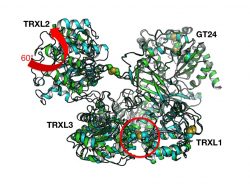TBXT Ligands for Chordoma: Covalent Inhibitors Targeting CYS122 Part B: Quinazolines
In this blog post, I will discuss the progress made on improving the binding affinity of new covalent quinazolines targeting CYS122, as well as some of the directions we are taking to further improve binding affinity to TBXT and reduce binding affinity towards EGFR. The synthetic work has been primarily driven by Zach and our Read More …

